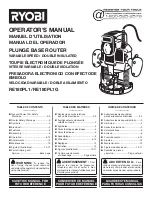
Chapter 4. Web Configuration & Operation
53
CHAPTER 3
WEB OPERATION & CONFIGURATION
Multi 802.1X:
In Multi 802.1X, one or more supplicants can get authenticated on the same port at the same time.
Each supplicant is authenticated individually and secured in the MAC table using the “Port Security” module.
MAC-based Auth.:
Unlike port-based 802.1X, MAC-based authentication do not transmit or receive EAPOL
frames. In MAC-based authentication, the switch acts as the supplicant on behalf of clients. The initial frame (any
kind of frame) sent by a client is snooped by the switch, which in turn uses the client's MAC address as both
username and password in the subsequent EAP exchange with the RADIUS server. The 6-byte MAC address is
converted to a string on the following form "xx-xx-xx-xx-xx-xx", that is, a dash (-) is used as separator between the
lower-cased hexadecimal digits. The switch only supports the MD5-Challenge authentication method, so the
RADIUS server must be configured accordingly.
RADIUS-Assigned QoS Enabled:
Select the checkbox to enable RADIUS-Assigned QoS on a port.
Radius-Assigned VLAN Enabled:
Select the checkbox to enable RADIUS-Assigned VLAN on a port.
Guest VLAN Enabled:
Select the checkbox to enable Guest VLAN on a port.
Port State:
Display the current state of the port from 802.1X authentication point of view. The possible states are as
follows:
Globally Disabled:
802.1X and MAC-based authentication are globally disabled.
Link Down:
802.1X and MAC-based authentication are enabled but there is no link on a port.
Authorized:
The port is forced in authorized mode and the supplicant is successfully authorized.
Unauthorized:
The port is forced in unauthorized mode and the supplicant is not successfully authorized by the
RADIUS server.
X Auth/Y Unauth:
The port is in a multi-supplicant mode. X clients are authorized and Y are unauthorized.
Restart:
Restart client authentication using one of the methods described below. Note that the restart buttons are
only enabled when the switch’s authentication mode is globally enabled (under System Configuration) and the port's
Admin State is an EAPOL-based or MACBased mode. Clicking these buttons will not cause settings changed on the
page to take effect.
Reauthenticate:
Schedules reauthentication to whenever the quiet-period of the port runs out (EAPOL-based
authentication). For MAC-based authentication, reauthentication will be attempted immediately. The button only
has effect for successfully authenticated clients on the port and will not cause the clients to get temporarily
unauthorized.
Reinitialize
: This forces the reinitialization of the clients on the port and thereby a reauthentication immediately.
The clients will transfer to the unauthorized state while the reauthentication is in progress.
3.4.5.2.2 Switch Status
















































